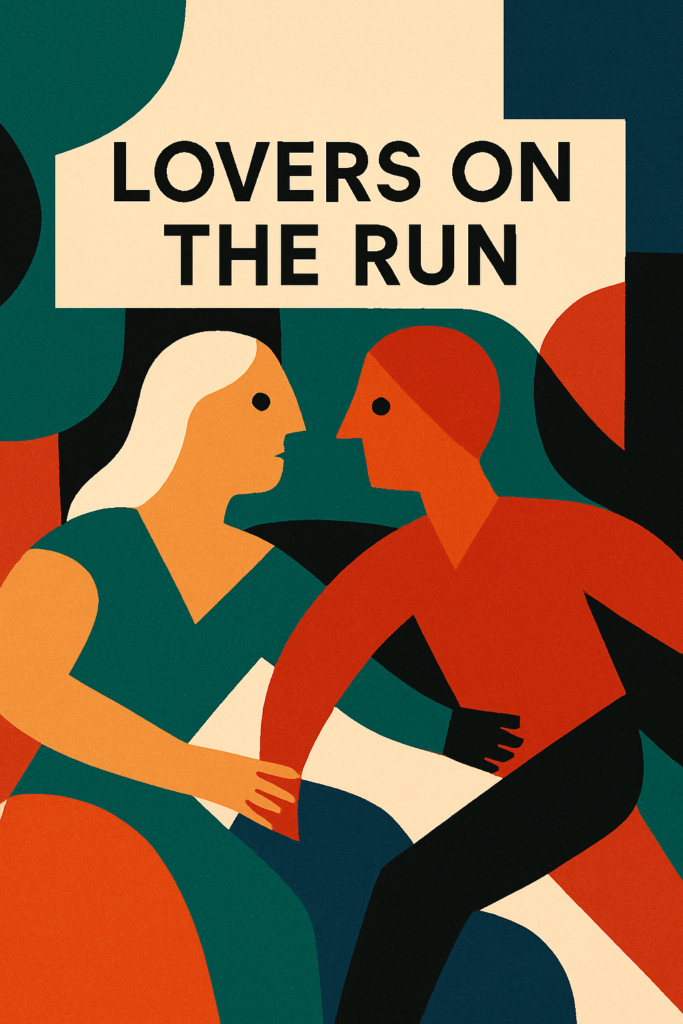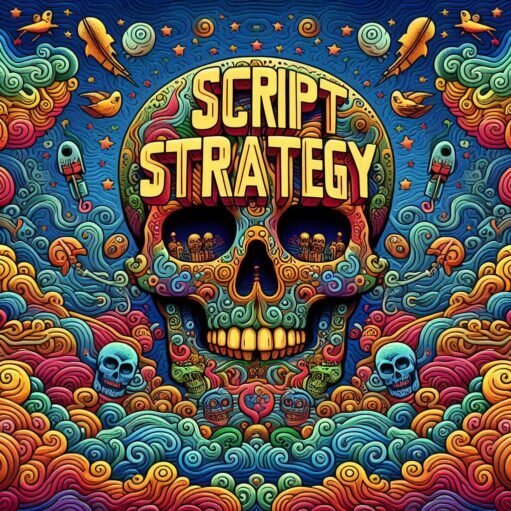Lovers on the Run: Five Tales of Passion, Crime, and the Cinematic Road to Ruin

Few cinematic archetypes are as enduring or seductive as the lovers-on-the-run narrative. At once romantic and anarchic, these stories blend passion with violence, idealism with nihilism. Whether seeking freedom, justice, or to fulfill an obsession with each other, these couples invariably leave a trail of emotional and physical wreckage in their wake.
Let’s look at five important films in this genre: They Live by Night (1948), You Only Live Once (1937), Badlands (1973), True Romance (1993), and Natural Born Killers (1994). We’ll examine the plots, characters, themes, and historical contexts of each film, and compare how these tales of lovers on the run reflect changing cultural values and cinematic styles.
1. They Live by Night (1948) – Directed by Nicholas Ray
Often considered the prototype of the lovers-on-the-run film, They Live by Night is a tragic noir about two young people doomed by circumstance. Bowie (Farley Granger), a naïve prison escapee, falls in love with Keechie (Cathy O’Donnell), the innocent niece of one of his criminal accomplices. As the couple flees across rural America, they attempt to build a new life, dreaming of normalcy. But the weight of Bowie’s criminal record and the inevitability of their capture make the story feel like an extended elegy.
Ray infuses the film with emotional intimacy, emphasizing the vulnerability of his characters rather than their outlaw bravado. It’s not about rebellion for its own sake; it’s about the impossibility of redemption in a world stacked against the young and poor. The film’s tenderness and fatalism have become hallmarks of the subgenre.
2. You Only Live Once (1937) – Directed by Fritz Lang
Predating Ray’s film by more than a decade, You Only Live Once is a social realist fable filtered through German Expressionist aesthetics. Henry Fonda plays Eddie Taylor, an ex-con trying to go straight, and Sylvia Sidney is his devoted wife, Joan. When Eddie is falsely accused of murder and sentenced to death, he escapes, and the couple embarks on a doomed flight from justice.
Lang, who fled Nazi Germany, imbues the film with a sense of inescapable doom. Guilt and fate play central roles, as Eddie is destroyed not by his actions, but by society’s refusal to forgive. Joan’s unwavering loyalty lends the film its emotional core. The lovers are not rebels but martyrs, crucified by a corrupt and indifferent system. The film’s critique of institutional injustice makes it an ancestor to later, more overtly political works such as Cool Hand Luke or Butch Cassidy and the Sundance Kid.
3. Badlands (1973) – Directed by Terrence Malick
Terrence Malick’s Badlands is a dreamlike take on lovers-on-the-run story, loosely based on the real-life killing spree of Charles Starkweather and Caril Ann Fugate. Martin Sheen stars as Kit, a charming but sociopathic young man, and Sissy Spacek as Holly, his detached teenage girlfriend. After killing her father, Kit and Holly embark on a killing spree across the Midwest.
Unlike earlier films, Badlands isn’t concerned with the moral clarity of its characters. Kit is seductive precisely because he is a cipher—a blank slate onto which Holly projects fantasies shaped by pop culture. Malick’s use of voiceover, painterly landscapes, and classical music contrasts with the violence, creating a dissonant tone that questions the romanticism of outlaw life.
Badlands marks a turning point: instead of blaming society, the film critiques the romanticization of rebellion itself. It also introduces a stylized, art-film approach to the genre that would influence countless successors.
4. True Romance (1993) – Directed by Tony Scott, Written by Quentin Tarantino
True Romance is a postmodern pastiche of the lovers-on-the-run narrative, blending gritty violence with fairy tale romance. Clarence (Christian Slater), a comic book nerd, marries Alabama (Patricia Arquette), a call girl, after a whirlwind romance. When Clarence kills her pimp and accidentally steals a suitcase full of cocaine in the process, the couple flees to California, hoping to sell the drugs and start a new life.
Tarantino’s script revels in genre tropes but undercuts them with irony, pop culture references, and graphic violence. Tony Scott directs with glossy panache, creating a candy-colored fever dream. Despite the body count, the emotional center remains the bond between Clarence and Alabama, who see themselves as heroes in their own pulp novel.
What distinguishes True Romance is its fusion of sincerity and style. The couple is objectively delusional, but their love feels real. Their repeated risk taking and obvious willingness to die for each other recalls the doomed romanticism of noir, even as the film plays with the genre’s ideals.
5. Natural Born Killers (1994) – Directed by Oliver Stone, Story by Quentin Tarantino
Released just a year after True Romance, Natural Born Killers holds a dark mirror up to the former film. Notably, both scripts originally emerged from the same 500-page rough draft that also included parts of what would become Pulp Fiction.
Mickey (Woody Harrelson) and Mallory (Juliette Lewis) are lovers who embark on a cross-country murder spree, becoming tabloid celebrities in the process. Unlike Clarence and Alabama, who stumble into violence, Mickey and Mallory embrace violence as their philosophy of life.
Oliver Stone turns the standard lovers-on-the-run formula into a media satire. The film risks sensory overload: shot in multiple formats, saturated with pop culture, and punctuated by hallucination. Mickey and Mallory are not so much antiheroes as avatars of a culture addicted to violence and spectacle.
Where True Romance finds sincerity in fantasy, Natural Born Killers exposes the toxic cultural machinery that produces these fantasies. It critiques not only the media but also the audience: what kind of society turns murderers into icons? In this context, the road trip becomes a journey into the American id.
Comparative Analysis
While all five of our films feature lovers on the run, they offer different interpretations of the trope, shaped by their historical moment and directorial vision.
- Innocence vs. Corruption: They Live by Night and You Only Live Once frame their protagonists as victims of a cruel world. Their love is sincere, and their crimes are either accidental or forced. In contrast, Natural Born Killers presents its couple as gleefully complicit in their own destruction.
- Style and Tone: The early films use a restrained visual style to underscore their realism. Badlands introduces lyrical detachment, while True Romance and Natural Born Killers embrace stylization, reflecting the influence of MTV, postmodernism, and changing audience tastes.
- Romanticism vs. Satire: All the films involve romance, but only some celebrate it. True Romance leans into fantasy, while Natural Born Killers deconstructs it. Badlands remains ambivalent, simultaneously beautiful and chilling.
- Cultural Critique: Each film reflects anxieties of its time. Lang’s 1930s melodrama critiques the justice system; Ray’s postwar noir mourns the lost American dream. Malick’s 1970s film dissects media-driven alienation, while Scott and Stone’s 1990s works respond to a media-saturated, violent culture.
The Enduring Appeal of Lovers on the Run
The lovers-on-the-run genre endures because it fuses primal human desires: love, freedom, and rebellion. These films give voice to a desire to escape the constraints of society and to be seen, completely, by someone else. Yet for every fleeting moment of joy, around the corner lies betrayal, capture, or death. More often than not, the story ends with reckoning rather than liberation.
Early lovers-on-the-run films plead for sympathy, mid-century works romanticize alienation, and later films reflect a fractured, cynical world where even love is commodified. Whether sincere or satirical, tragic or triumphant, these films continue to thrill and provoke because they remind us that love, when unbound by law or logic, is uniquely dangerous.
